Discover 20 hidden attractions, cool sights, and unusual things to do in Lund (Sweden). Don't miss out on these must-see attractions: Lund Cathedral, Kulturen, and Lundagård Park. Also, be sure to include Botaniska trädgården in your itinerary.
Below, you can find the list of the most amazing places you should visit in Lund (Skåne).
Table of Contents
Lund Cathedral
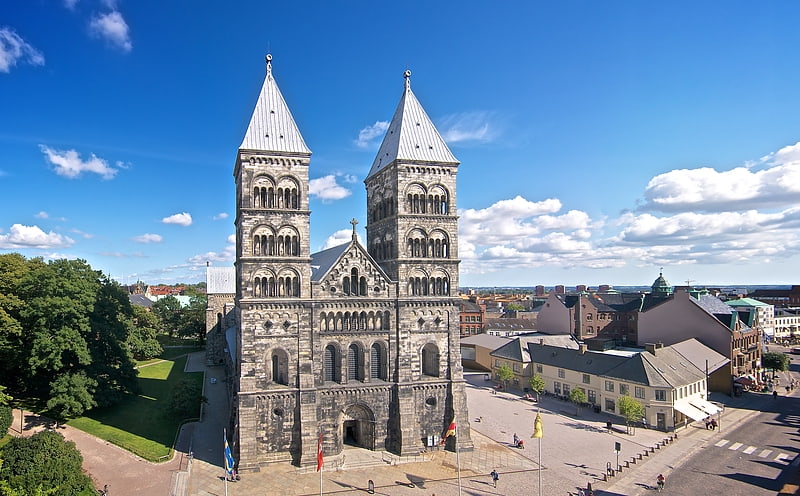
Also known as: Lunds domkyrka
Lutheran church with organ concerts. Lund Cathedral is a cathedral of the Lutheran Church of Sweden in Lund, Scania, Sweden. It is the seat of the Bishop of Lund and the main church of the Diocese of Lund. It was built as the Catholic cathedral of the archiepiscopal see of all the Nordic countries, dedicated to Saint Lawrence. It is one of the oldest stone buildings still in use in Sweden.
Lund Cathedral has been called "the most powerful representative of Romanesque architecture in the Nordic countries". At the time of its construction, Lund and the cathedral belonged to Denmark. The main altar was consecrated in 1145 and the cathedral was by that time largely finished; the western towers were built somewhat later. Its architecture show clear influences from contemporary north Italian architecture, conveyed via the Rhine Valley. The earliest architect was named Donatus, though his precise role in the construction of the cathedral is difficult to determine. The new cathedral was richly decorated with stone sculpture, including two unusual statues in the crypt traditionally called "The giant Finn and his wife" about which a local legend has developed. The cathedral was severely damaged in a fire in 1234, and major restoration works were carried out in the early 16th century under the leadership of Adam van Düren. Following the Reformation, the cathedral suffered from lost income and dilapidation. In 1658, the city of Lund and the cathedral became a part of Sweden following the Treaty of Roskilde. Lund Cathedral was the site of the ceremony acknowledging the founding of Lund University in 1668. Repairs were made during the 18th century but in 1832 a complete restoration of the cathedral was recommended. Subsequently, much of the cathedral was restored and rebuilt during most of the 19th century. The work was first led by Carl Georg Brunius and later by architect Helgo Zettervall and not entirely finished until 1893. The changes implemented during the 19th century were extensive; among other things, Zettervall had the entire western part, including the towers, demolished and rebuilt to his own designs.
The medieval cathedral contains several historic furnishings and works of art. Its main altarpiece was donated to the cathedral in 1398, and it also contains Gothic choir stalls, bronzes and an astronomical clock from the 15th century (although heavily restored in 1923). When it was built, Lund Cathedral was lavishly decorated with Romanesque stone sculptures. It also contains late medieval stone sculptures from the time of Adam van Düren's renovation. After the Reformation the cathedral was also equipped with a decorated pulpit. Of more recent date is the large mosaic in the apse, by Joakim Skovgaard, installed in 1927. Lund Cathedral has six church organs, one of which is the largest in Sweden, and is also used as a concert venue.[1]
Address: Kyrkogatan 6, 222 22 Lund
Kulturen
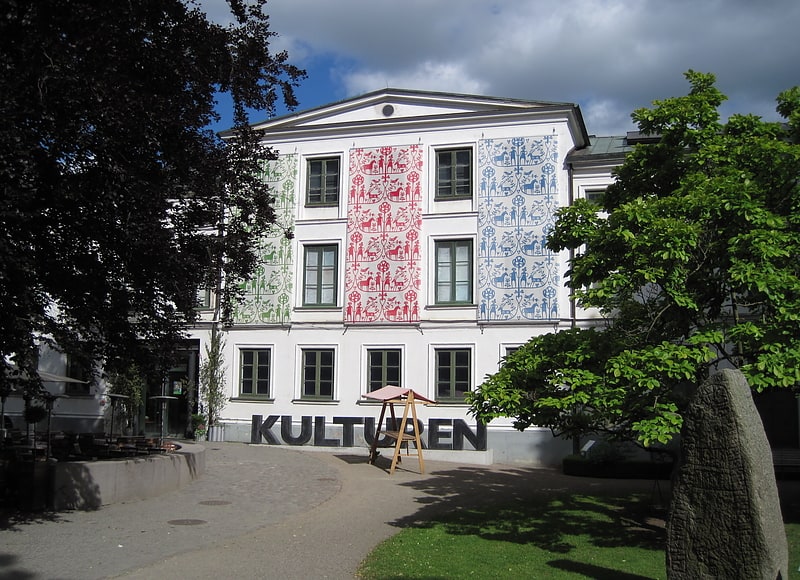
Cultural center with gardens and exhibits. Kulturen is an open air museum in Lund in Lund, Sweden. Occupying two blocks in central Lund, Kulturen is Sweden's and the world's second oldest open-air museum after Skansen in Stockholm. It contains historic buildings, dating from the Middle Ages to the 1930s, set in gardens or cobblestone streets. The complete name of the museum is Kulturhistoriska föreningen för södra Sverige.[2]
Lundagård Park
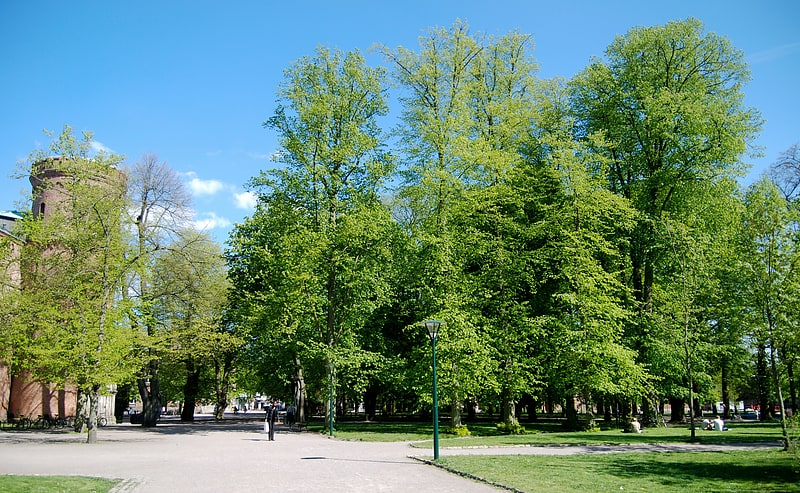
Also known as: Lundagård
Tranquil park with shade trees and benches. Lundagård is a park located in Lund, Sweden. It is situated between the Lund University Main Building in the North, and Lund Cathedral in the South with Kungshuset in between.
Lundagård was originally the name of the archbishop's fortress built in the early 12th century just north of Lund Cathedral. For a long time a walled garden separated "town" from "gown". Today, the one remaining gate (of the original three) is the entrance to the Kulturen museum. The park known today was designed in 1745 by the Royal architect Carl Hårleman and originally included a botanical garden.
Kungshuset, built in 1584 as a residence by the Danish king, later became the first main building of Lund University. As the university expanded the botanical garden was replaced by Universitetsplatsen in the 1880s and the new university building, located just north of Kungshuset.
Other buildings in Lundagård are the AF Borgen, the Lund University Historical Museum and Palaestra et Odeum. Tegnérsplatsen is located between the Historical Museum and the AF Borgen and contains a statue of Esaias Tegnér. In the centre of Lundagård is a statue entitled "the man that breaks free from the rock". At Universitetsplatsen is Runstenskullen, a small height with a collection of Runestones created in 1868.[3]
Address: Paradisgatan 2, Lund
Botaniska trädgården

Historic, tranquil botanical garden. Botaniska trädgården is a botanical garden in central Lund, Sweden, open to the public daily without charge. The 8 hectares site contains 7000 species of plants, of which 200 are found in the greenhouses representing nine different climate zones. It is owned and operated by Lund University. Its international identification code is LD.[4]
Address: 20 Oestra Vallgatan, 223 61 Lund
Lund astronomical clock
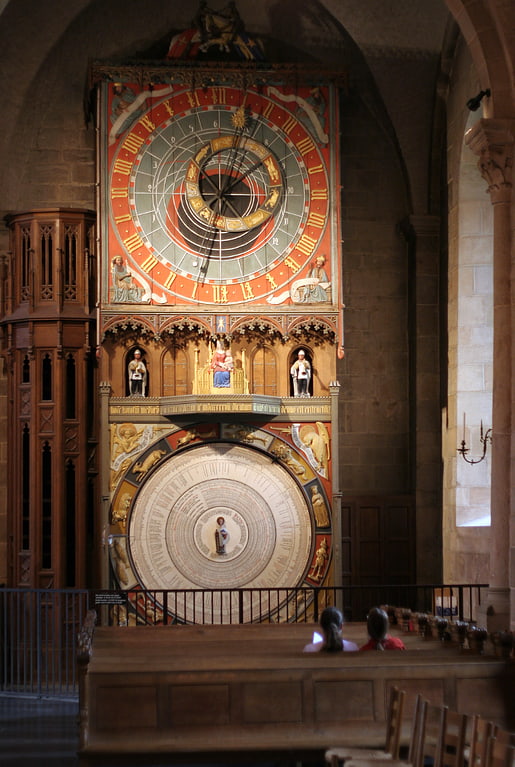
Lund astronomical clock, occasionally and at least since the 16th century referred to as Horologium mirabile Lundense, is a 15th-century astronomical clock in Lund Cathedral. Mentioned in written sources for the first time in 1442, it was probably made and installed sometime around 1423–25, possibly by Nikolaus Lilienfeld. It is part of a group of related medieval astronomical clocks found in the area around the south Baltic Sea. In 1837 the clock was dismantled. Between 1909 and 1923, it was restored by the Danish clockmaker Julius Bertram-Larsen and the Swedish architect responsible for the upkeep of the cathedral, Theodor Wåhlin. From the old clock, the face of the clock as well as the mechanism, which was largely replaced during the 18th century, was salvaged and re-used. The casing, most parts of the calendar which occupies the lower part, and the middle section were made anew.
The clock displays a medieval concept of time, based on a geocentric idea of the universe, and is decorated with religious symbols. It is possible to determine the current time of the day, the current lunar phase, the current position of the sun in the zodiac as well as the current date of the year and related information, from the clock. The current perpetual calendar spans from 1923 to 2123.
Two times every day, the mechanism of the clock triggers a parade of statues representing the Three Kings across the face of the astronomical clock, while a built-in organ plays the medieval tune In dulci jubilo.[5]
All Saints Church

Also known as: Allhelgonakyrkan, Lund
Church in Lund, Sweden. All Saints Church is a church in Lund, Sweden. Belonging to the Lunds All Saints Parish of the Diocese of Lund, it was opened on All Saints' Day 1891. It is situated roughly 600 meters north of Lund Cathedral.[6]
Address: 34 Bredgatan, 222 21 Lund
Sankt Hans backar
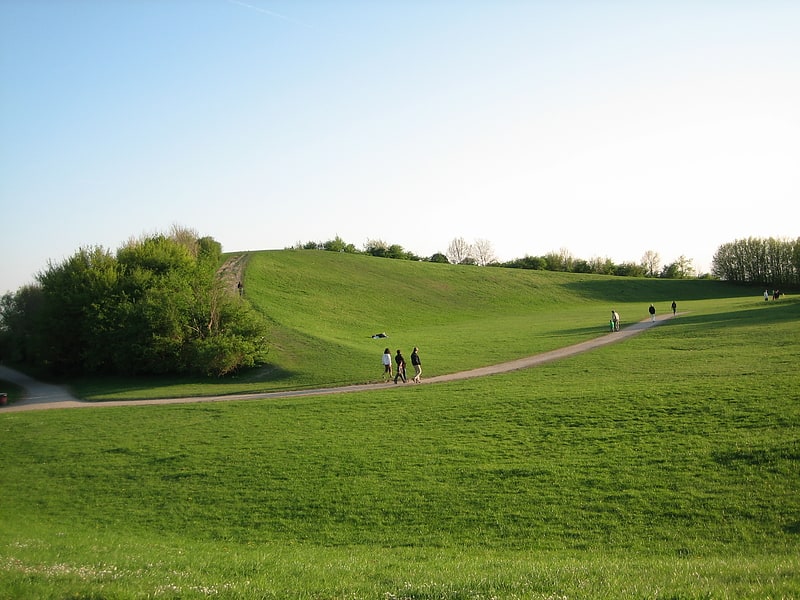
Park in Lund, Sweden. Sankt Hans backar is a park and recreational area on a hill located in Lund, Skåne, in the southernmost part of Sweden. The top of the hill reaches 85 metres above sea level.
The hill is a former municipal dump, opened in 1947, which was in use until 1954. The recreational area was constructed in the 1970s, giving the area its current form. Pollution remained an issue – the Valkärra stream, whuch flows through the park, was contaminated by leaking water, leading to fish mutations – and the municipality financed a new decontamination project, starting in 2013, to protect water bodies in the area.
The park is the largest urban green space in Lund, surrounded by residential areas. It is a popular vantage point, offering a view of the town and its surroundings towards Öresund. Lundakarnevalen use the place to organize social events. There is an annual hill running competition, Sankt Hans Extreme, in the hills. An amphitheatre is planned to be constructed in the hills. The area is used by surrounding schools and preschools as an outdoor classroom.[7]
Museum of Sketches for Public Art

Also known as: Skissernas museum
Art museum in Lund, Sweden. The Museum of Sketches for Public Art is an art museum at Lund University in Sweden, dedicated to the collection and display of sketches and drawings for contemporary monumental and public art, such as frescos, sculpture and reliefs. The museum contains about 25,000 items, including sketches and contest entries by leading 20th-century Swedish artists such as Isaac Grünewald, other Nordic artists and foreign artists such as Henry Moore, Diego Rivera and Henri Matisse.
The museum was founded in 1934 by Ragnar Josephson (1891–1966), professor of the History and Theory of Art at Lund University. Josephson, who wanted to collect material illuminating the creative process of the artist, wrote a book on the topic, Konstverkets födelse ("The Birth of the Work of Art", 1940), as well as many shorter studies. The collection opened to the public in 1941 in a building close to the Lund University Library.
The original building was an old gymnastic hall; the architect Hans Westman added a new section, and another addition, designed by Johan Celsing, was completed in 2005. The museum reopened in March 2005 after having been closed for construction work since 2001.[8]
Address: Finngatan 2, Lund
Danish Runic Inscription 331

Gårdstånga runestone DR 331 is a runestone located at Runstenshögen in Lundagård, in Lund.
The stone was discovered in 1867 in the wall of Gårdstånga church. It was sent in 1868 to Lund together with runestone DR 330 discovered at the same time. The last sign in the inscription is not a rune, but it has been interpreted as Thor's Hammer, and in that case it was a pagan manifestation against the newly arrived Christian faith.
Other surviving runestones or inscriptions depicting Thor's hammer include runestones U 1161 in Altuna, Sö 86 in Åby, Sö 111 in Stenkvista, Vg 113 in Lärkegapet, Öl 1 in Karlevi, DR 26 in Laeborg, DR 48 in Hanning, and DR 120 in Spentrup.[9]
Mejeriet
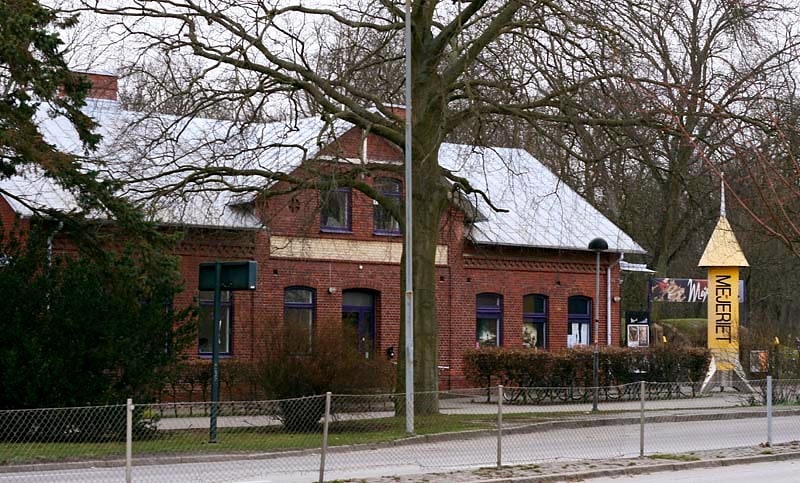
Also known as: Kulturmejeriet
Cultural center in Lund, Sweden. Mejeriet, or Kulturmejeriet, is a cultural venue in Lund, Sweden, which opened in 1987. It originally started as a co-operative dairy in 1896 by the corner of Malmövägen and the Lund-Revinge-Harlösa railroad. The dairy itself closed in 1968.
The venue has a full-service bar and restaurant, a cinema, a music school, 12 rehearsal rooms (where 30 bands rehearse) and two stages that since the inauguration has hosted concerts with music artists such as Jason Molina, Miles Davis, Bo Diddley, Bad Religion, NOFX, Ramones, Primal Scream, Sun Ra, George Clinton, Levellers, James, Alice in Chains, Massive Attack, Dead Prez, Miriam Makeba, The Stone Roses, Iggy Pop, Elvis Costello, Oasis, My Bloody Valentine, Dinosaur Jr. Sinéad O'Connor, Beach House, Johnossi, Rebecca & Fiona, Kurt Vile and many more.
The venue is run as a non-profit organization and works as an umbrella organization for the other non-profit members which in turn is responsible for the events at the venue.
Today, the venue arranges concerts, clubs, cinema viewings, exhibitions and other cultural events.
Mejeriet is a member of Trans Europe Halles, a European network of independent cultural centres.[10]
Address: Stora Södergatan 64, 222 23 Lund
Stora Råby kyrka
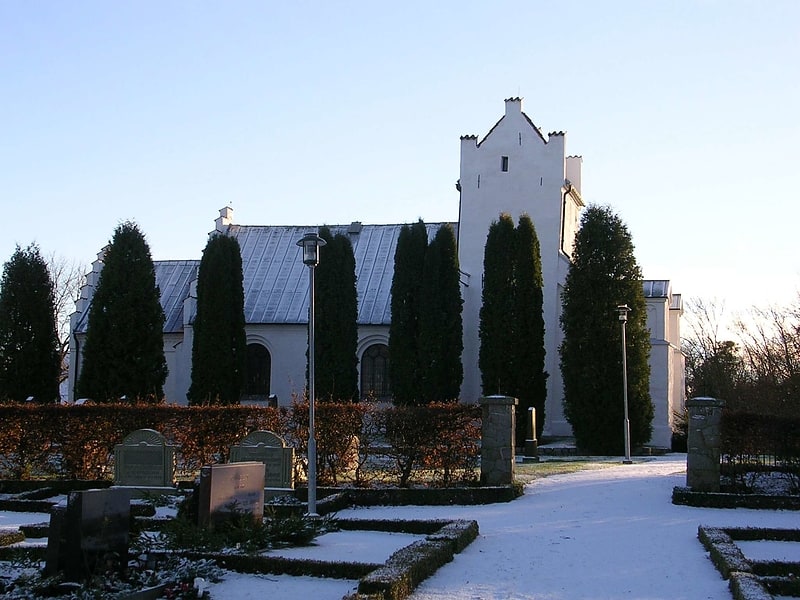
Church in Lund, Sweden. Stora Råby Church is a medieval Lutheran church outside Lund in the province of Scania, Sweden. It belongs to the Diocese of Lund.[11]
Address: 7 Stora Råby byaväg, Lund
City park

Also known as: Stadsparken
Park, Relax in park, Garden, Body of water, Playground
Skissernas museum

Drawings and sketches by prominent artists. The Museum of Sketches for Public Art is an art museum at Lund University in Sweden, dedicated to the collection and display of sketches and drawings for contemporary monumental and public art, such as frescos, sculpture and reliefs. The museum contains about 25,000 items, including sketches and contest entries by leading 20th-century Swedish artists such as Isaac Grünewald, other Nordic artists and foreign artists such as Henry Moore, Diego Rivera and Henri Matisse.
The museum was founded in 1934 by Ragnar Josephson (1891–1966), professor of the History and Theory of Art at Lund University. Josephson, who wanted to collect material illuminating the creative process of the artist, wrote a book on the topic, Konstverkets födelse ("The Birth of the Work of Art", 1940), as well as many shorter studies. The collection opened to the public in 1941 in a building close to the Lund University Library.
The original building was an old gymnastic hall; the architect Hans Westman added a new section, and another addition, designed by Johan Celsing, was completed in 2005. The museum reopened in March 2005 after having been closed for construction work since 2001.[12]
Address: Finngatan 2, 223 62 Lund
Lund University Main Building
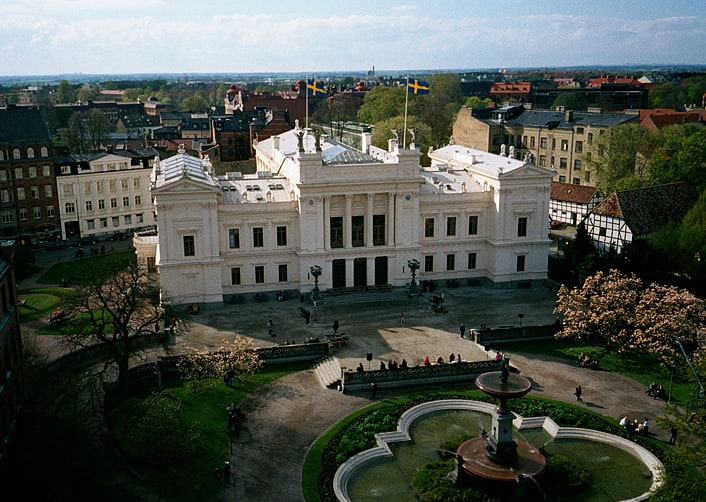
Also known as: Universitetshuset, Lund
The main building of the Lund University was designed by architect Helgo Zettervall and inaugurated by King Oscar II in 1882. Construction began in 1874, when the old main building Kungshuset had become too small for the growing number of students.
The design is characterised by Helgo Zettervall's fascination with classical antiquity, and features columns and fancy copings. There were originally four sphinxes on the roof, but they had to be removed within 30 years because of bad quality. In the 1990s four new sphinxes were placed on the roof.
Like many of Zettervall's buildings, it was criticized for a lack of uniformity and not being well thought out.[13]
Address: 2 Paradisgatan, 223 50 Lund
Liberiet

Historical landmark in Lund, Sweden. Liberiet is a building in central Lund, Sweden, south of Lund Cathedral. Originally used as a library, the building was built in the 15th century. Today it serves as a Pilgrim Center.[14]
Address: 6;8 Domkyrkoplatsen, Lund
St. Peter's Priory

Also known as: Sankt Peters klosters kyrka
Priory. St. Peter's Priory was one of Denmark's early monastic houses. It was located in Lund, Skåne, now southern Sweden, formerly part of Denmark.[15]
Jakriborg
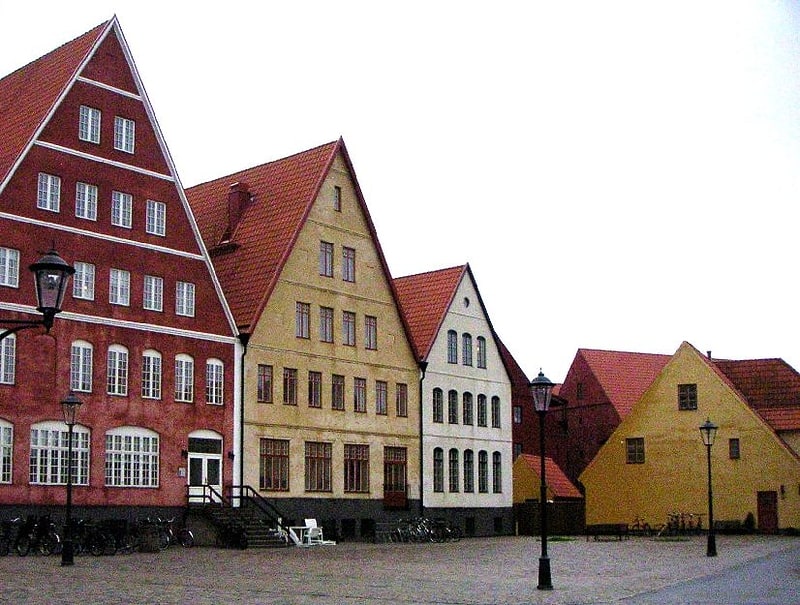
Tourist attraction in Hjärup, Sweden. Jakriborg is a housing estate in Hjärup, Staffanstorp Municipality between Malmö and Lund in Scania, southern Sweden.
The area was built from the late 1990s on by the real estate firm Jakri AB and has been growing ever since. Jakri AB was founded by two brothers, Jan Berggren and Krister Berggren. Jan Berggren's project was realised through collaboration with the two architects Robin Manger Architect SAR/MSA and Marcus Axelsson Architect SAR/MSA. The Jakriborg project displays similarities with the contemporary New Urbanism movement and is often compared to the Poundbury project in England built by Prince Charles. It is also a well-known example of traditional and New Classical Architecture.[16]
Church of the Holy Spirit

Also known as: Helgeandskyrkan, Lund
The Church of the Holy Spirit is a church located in the district of Klostergården, on the south-west side of Lund in Skåne, Sweden. It was opened in 1968 as a district church in the Diocese of Lund, but became the main church of the parish of Helgeand after it was formed in 1991.
The functionalistic church has thick brick walls, a campanile and a pulpit on the exterior designed for outdoor services. It has 23 church bells, of which twenty form a chime of bells and three are located in the campanile.
The architect behind the church was Sten Samuelson (1926-2002).[17]
Lund Observatory
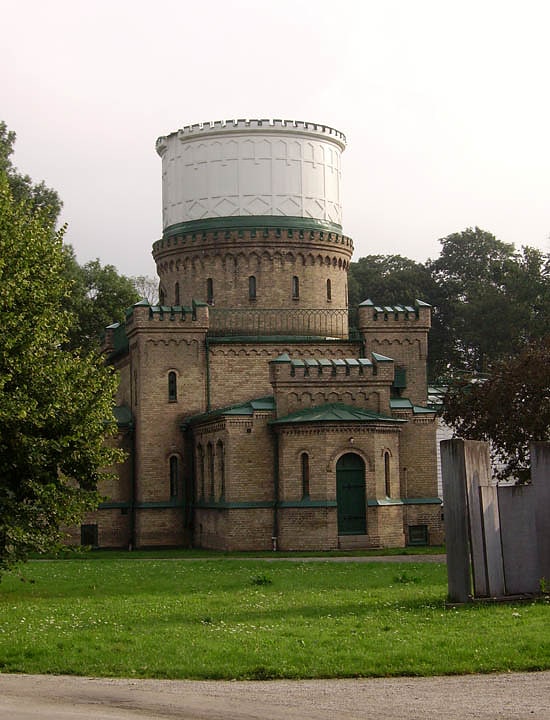
Also known as: Lunds gamla observatorium
Astronomical observatory. Lund Observatory is the official English name for the astronomy department at Lund University. Between 1867-2001 "Lund Observatory" was also the name of the Observatory building, which is now referred to as the "Lund Old Observatory". As of January 2010, Lund Observatory is part of the Department of Astronomy and Theoretical Physics at Lund University. It is located in Lund, Sweden.[18]
Dagstorp Runestone

Also known as: Dagstorpstenen
The Dagstorp Runestone, designated as DR 325 in the Rundata catalog, is a Viking Age memorial runestone that was discovered at Dagstorp, which is about two kilometers northwest of Kävlinge, Scania, Sweden.[19]